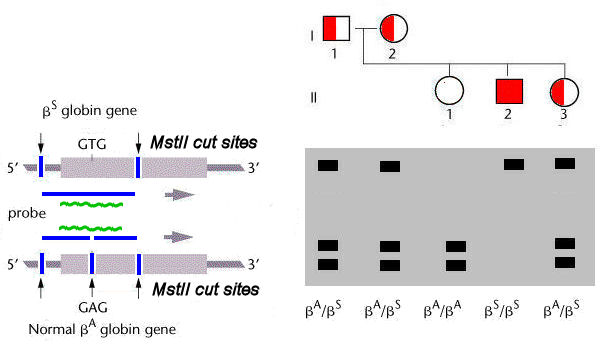
RFLP / MstII test for Sickle-Cell Anemia

RFLP / MstII test for Sickle-Cell Anemia
Sickle-cell Anemia is a
molecular disease caused by a mutation in the beta-globin
gene. The difference between the standard A
allele and the sickle-cell S
allele is a single-nucleotide polymorphism (SNP)
(A![]() T) in the second position
of the sixth codon of this gene. The sequence of the
standard A
allele (CCTGAGG) happens to correspond to an
MstII restriction site
(CCTNAGG), which is altered in the allele (CCTGGG).
The
beta-globin
gene region includes two flanking MstII sites (red lines).
T) in the second position
of the sixth codon of this gene. The sequence of the
standard A
allele (CCTGAGG) happens to correspond to an
MstII restriction site
(CCTNAGG), which is altered in the allele (CCTGGG).
The
beta-globin
gene region includes two flanking MstII sites (red lines).
In the genetic
test for the
This
test depends on the circumstance that the SNP responsible
for the sickle-cell allele
coincidentally create an RFLP with respect to the standard allele. The SNP
in the MstII site does not itself
cause sickle-cell anemia, but is simply a genetic marker for the
sickle-cell allele.